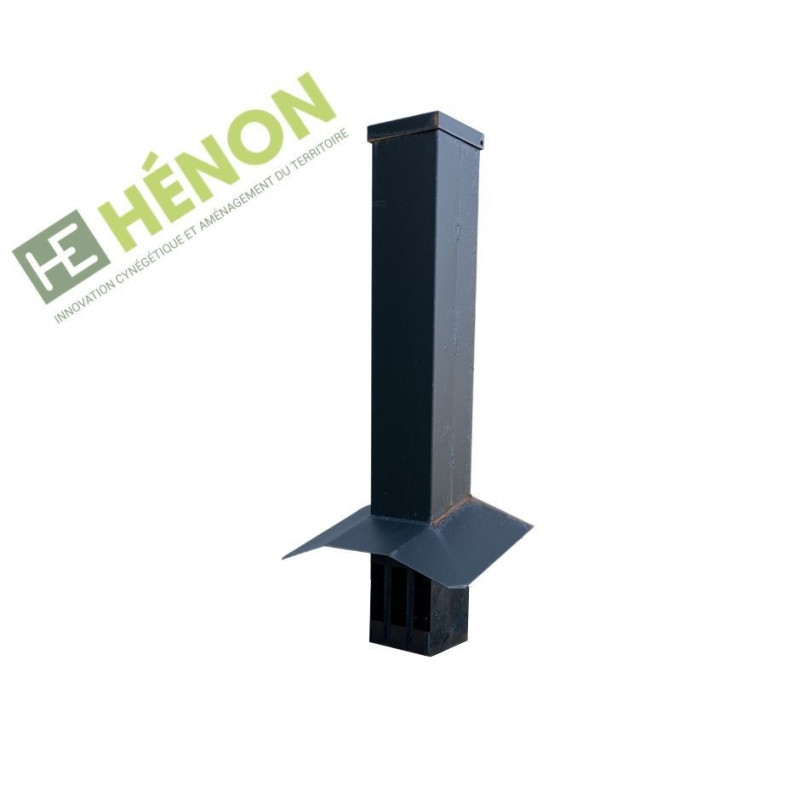





Metal bollard designed for small game farming. Made of metal and pivoting to resist the boar.
 Garanties sécurité(à modifier dans le module "Réassurance")
Garanties sécurité(à modifier dans le module "Réassurance") Politique de livraison(à modifier dans le module "Réassurance")
Politique de livraison(à modifier dans le module "Réassurance") Politique retours(à modifier dans le module "Réassurance")
Politique retours(à modifier dans le module "Réassurance")Metallic Anti boar grainer
Technical data :
The anti-boar metal seeder is made of 15/10 sheet metal.
It swivels on its metal axis at 360°.
It consists of a post, a bollard and a cover.
Capacity: 25 litres
Dimension: Length: 45 cm, Width 30 cm and Height 140 cm
Colour: green
French production in our workshops
Use :
The metal Anti-Boom Seeder has a capacity of 25 litres and is entirely made of 15/10 sheet metal. It pivots on a 360° metal axis. This allows it to resist the attacks of wild boars and to preserve the grain or wheat to feed small game.
The Anti-Boar Metal Seeder consists of a stake that is driven into the ground, it will serve as a base and axis for the bollard. The height of the stake is 1.4m. The post can be reinforced with a solid tube. The bollard, which measures 15 cm x 15 cm inside, is then slid into the axis.
On the front and sides a 'cap' protects the opening from the rain to prevent the grain from getting wet. This cap protrudes 30 cm from the front.
We will use the metal anti-boar seeder on a territory where the boar is present, and where the standard seeders are degraded. Even if the cost of the metal anti-boar seeder is higher, it avoids to buy several times a year the seeders and above all it avoids a lot of grain loss.
The wild boar :
The wild boar is an omnivorous mammal, it is a nocturnal animal that can travel tens of kilometres at night. It can weigh up to 100 kg to 150 kg for the male and a hundred kg for the female. It is a huntable species in constant progression. Where it is found in excess it leads to numerous degradations, especially at the agrineries, an easy and abundant food source.
Data sheet
Specific References